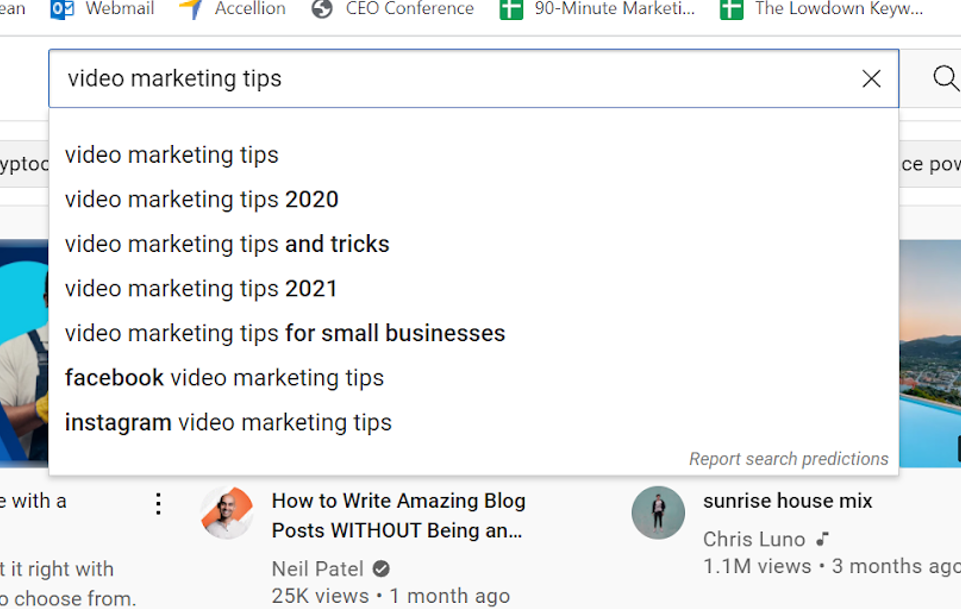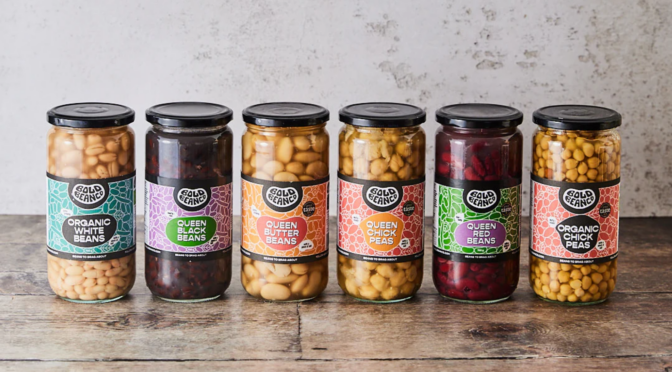Ever Googled something and clicked on a video in the search results? That’s an example of a video that’s been optimised for search. So many companies spend precious time and ££ on creating SEO blogs, but when it comes to their video content, they’re quickly posting a video on YouTube and forgetting to optimise it.
So how do I get my video to show on search results? Top tip number one. Make sure your video deserves to rank. The bottom line is that if your video is poorly produced or unengaging, then however well it’s optimised, it won’t rank on Google/YouTube. For all other tips on SEO for videos on YouTube and Google, then read our blog below. The Small Films team are champions at creating videos that convert – Do get in contact if we can help.
Perform keyword research
for your video
Keyword research is the backbone of your video ranking on Google/YouTube. In layman’s terms keyword research is the process of finding out the words that someone inputs into Google or YouTube when they’re looking for content on a particular topic. By tapping into what people search, it will help you understand how to label your video. When performing keyword research, it’s essential to understand the intent behind the search. For example, someone searching for ‘video production’ might be looking for content to help them write a blog, whereas someone searching ‘video production services in London’ is likely looking to buy.
Start off by brainstorming the topics related to your video’s content, i.e
- Video marketing strategies
- Video marketing tips
- Social media video content
Then once you have a long list, start to type the terms directly into Google and YouTube’s search bar. The search engines will make suggestions as you type, and so add these suggestions to your growing list.
The reason YouTube and Google’s suggested terms are so effective is that they’re what people are actually typing into YouTube.
Now check what videos are coming up when you Google the keywords. This helps you to understand what types of searches Google is showing videos for.
Once you have collated all the potential keywords from your list, you need to narrow them down.
>> Need our help producing a video and marketing it? The Small Films team has created hundreds of awesome films for brands. Give us a bell
Once you have your bumper list of keywords then use an SEO tool to discover the search volume and keyword difficulty for the phrases.
There are lots of SEO tools to choose from, and whilst most charge top dollar, a few of them do offer free trials. Our pick of the best tools on the market are
Ubersuggest
SERanking
Ahrefs
SEMRush
Then balance each keywords search volume with the SEO difficulty. In the screenshot above ‘tips for video marketing’, whilst it has less search volume than ‘video marketing tips’, it has a much easier keyword difficulty – this would therefore be a sensible keyword to target.
Video SEO Best Practices
Once you have finalised your target keyword/s, then it’s time to start following the video SEO best practices to help support your video to rank.
Optimise the title of your video for your keywords
When naming your video, ensure that you use the keywords in the title whilst also ensuring that it sounds like click-worthy content. So don’t go dry like ‘video marketing tips’, instead opt for ‘8 killer tips for video marketing for 2022’.
Write a video description designed to attract clicks
The description is an essential part of helping your video rank, as it describes to Google and YouTube the context of what your video is about.
Aim to use your keywords within the first section of your description and repeat 2 – 4 times throughout. The description will help to boost your CTR and the more clicks, the higher Google / YouTube will serve your video up the rankings.
Design a custom thumbnail for your video
Custom thumbnails are a super-effective way to drive a better CTR (click-through-rate). They help users to know at a quick glance what your video is about – so in turn, you’re more likely to click on it. Design sites like canva.com are a great resource for easy-to-use templates for YouTube thumbnails. Google recommends a resolution size of 1,280 x 720 (with a minimum width of 640 pixels)
Check out HubSpot’s YouTube as an example of custom thumbnails done well.
Save your custom thumbnail with the primary keyword in the title
Don’t fall into that well-known trap of saving your thumbnail as 43890.jpg. Instead title the thumbnail with your primary keywords, i.e how_to_create_a_social_media_strategy.jpg.
Have a strong call to action for viewers to subscribe to your channel
If a viewer watches your video then subscribes to your channel, this sends a signal to YouTube that the viewer has most likely enjoyed your video. This is a fantastic way to help your videos move up the search rankings. So what’s the easiest way to make this happen? Don’t be afraid to ask your viewers to hit that subscribe button. Add this ask to your script, include a CTA at the end of the video or add it as part of your video description. These are all easy ways to help build those valuable subscribers.
>> Looking for a video production company in London to help support you with your video content? Drop the Small Films team a line, we’d love to help.
Use your target keyword in your script
YouTube will automatically transcribe your video, so if you use your target keywords in your script, then YouTube will pick up on this. If you want to make sure that YouTube has 100% correctly transcribed, then take advantage of the option to upload your transcript.
Then promote the hell out of it (helping to secure those coveted backlinks)
Once you have your video uploaded and optimised for SEO, then make sure to promote it – this brings in an audience and helps to signal to YouTube that viewers want to watch it.
Top ways to promote your video
- Write an optimised blog on the topic and embed your video
- Push it out on your social media channels
- Produce an email campaign
- Write a guest post that points to the video
- Promote with social media ads
- Link to the video in other YouTube video descriptions
Nail your audience retention and engagement
YouTube can understand how much an audience is engaged with a video by how long they stay watching. If a viewer clicks off a video within a minute and looks for a new video to answer their challenge, then YouTube recognises that as low audience retention.
>> Need help with your video content? Have a chat with our team at Small Films
How much a user is engaging with the content is also a ranking factor. Is the content so good it gathers likes, shares and comments? Or is the content racking up the thumb down emojis? Encourage viewers in your video script to interact with the content if they like it.
Video SEO Checklist
- Do keyword research
- Optimise the title of your video for key search terms
- Name the video file with your primary keyword
- Write a description designed to attract clicks. Use your keyword within the description
- Design a custom thumbnail, helping to show users what the video is about to help CTR
- Save the custom thumbnail with the primary keyword
- Upload your transcript to YouTube
- Promote your video across digital marketing channels
- Create backlinks to your videos
- Nail your audience retention and engagement
We’re a video production company in London that has been creating films for years. If you’re looking for support with a video for your brand, then do give us a shout. We’d love to help.







